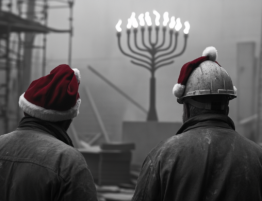
Many functions of the Construction Act exist to address disputes that affect multiple levels of participants involved in a construction project. For example, a dispute strictly between a Contractor and a Subcontractor may still significantly affect the interests of an Owner or a Mortgagee. Consider the following scenario: after completing a majority of its work, a Subcontractor enters into a dispute with the General Contractor on whether certain work was considered “extra” to the scope of the subcontract. The amount owing to the Subcontractor is significantly greater than what an Owner would have to retain as holdback. Luckily, the Subcontractor learns that neither the Owner nor the financier Mortgagee have advanced the latest payment draw to the General Contractor. How can the Subcontractor stop these payments in wake of its dispute?
Written Notice of Lien
In realizing the fast-paced nature of the construction industry, the drafters of the Mechanics’ Lien Act, which preceded the Construction Lien Act and more recently the Construction Act, created a mechanism allowing Subcontractors to cease payment on a project without having to actually preserve a lien. Namely, a “Written Notice of Lien” (“WNL”). Under Section 1(1) of the Construction Lien Act, a “written notice of lien” includes a claim for lien and any written notice given by a person having a lien that (a) identifies the payer and identifies the premises; and (b) states that amount that the person has not been paid and is owed to the person by the payer.[1]
In the infancy of this concept, the Court defined a WNL as having four components:
- an indication that the Subcontractor is supplying material to the Contractor;
- that there is an account owed to the Subcontractor by the Contractor;
- that the Subcontractor is claiming a lien (and perhaps will register it unless payment is made); and
- the amount that the lien is for.[2]
Recently, the Court added a fifth element necessary in a WNL, namely “a warning from the lien claimant to the recipient that the dispute between the claimant and its payer has reached ‘the lien stage’ and that the status quo flow of funds is to be interrupted immediately.”[3] In adding this fifth element, Master Wiebe re-iterated that the actual WNL did not have to comply with any particular form. One should note that, for any contracts procured or entered into after July 1, 2018, the Construction Act now has a prescribed form that Subcontractors must comply with.[4]
Function of a WNL
Where a Subcontractor serves a WNL to a payer, which includes an Owner or any Contractor for where the dispute is between a Subcontractor and Sub-Subcontractor, that payer must retain, in addition to basic holdback required under Section 22, an amount to satisfy that potential lien.[5] This amount is colloquially referred to as “Notice Holdback.”
Returning to the scenario raised at the outset of this post, Notice Holdback helps solve the problem of stopping payment to ensure that enough money is retained by a payer to satisfy the amount owed to the Subcontractor. Since a lien is security only against holdback, the WNL, in creating Notice Holdback, expands the claimable pool of security.
WNLs have a further function with respect to priorities between claimants and Mortgagees. A Subcontractor must serve a WNL onto a Mortgagee to ensure that it has priority over any subsequent advances made by the Mortgagee.[6] Particularly, where a Mortgagee registers a Mortgage and a portion of same is not advanced prior to the WNL, the Mortgagee risks losing priority over that portion if they proceed to release those funds in light of a WNL.
Strategy of a WNL
In addition to expanding the pool of security, the real benefit of a WNL is that it stops the flow of payment on a project. This creates leverage against a Contractor, who may face pressure from an Owner to deal with any WNL or other liens arising to ensure that the flow of payment resumes. Mind you, a Subcontractor does not actually have to preserve a lien in order to serve a WNL.[7] However, where a WNL is served, but lien rights subsequently expire, a party may move under Section 47(1)(c) to declare that the WNL no longer binds any persons to retain Notice Holdback.
Practically, and prior to Interim Adjudication being available to parties, WNLs were utilized as a mechanism of early dispute resolution on sites to show that Subcontractors meant business and to prevent prolonged and unnecessary litigation. Moving forward, it will be interesting to observe how Interim Adjudication will affect the use of WNLs.
The foregoing is for informational purposes only and should in no way be relied upon as legal advice. If you have any further questions, or would like to schedule an appointment for legal advice tailored to your circumstances and business, please contact me at dan@fridmar.com .
[1] R.S.O. 1990, c. C.30, as amended, s. 1(1). The definition has changed in the Construction Act to include an actual prescribed form under O. Reg. 303/18: Forms, s. 2(1) [Forms].
[2] 354628 Ontario Ltd. v. Mutic (1978), 1978 CarswellOnt 198 at para 11 (Master) and further affirmed in Bestdoor Co. v. Toronto Economic Development Corp. (2004), 2004 CarswellOnt 2426.
[3] Trenchline Construction Inc. v. Unimac-United Management Corp., 2016 ONSC 6136 at para. 71 (Master) [Trenchline].
[4] Forms, supra note 1.
[5] R.S.O. 1990, c. C.30, s. 24(1)&(2).
[6] R.S.O. 1990, c. C.30, s. 78(4)(b).
[7] Trenchline, supra note 3.







